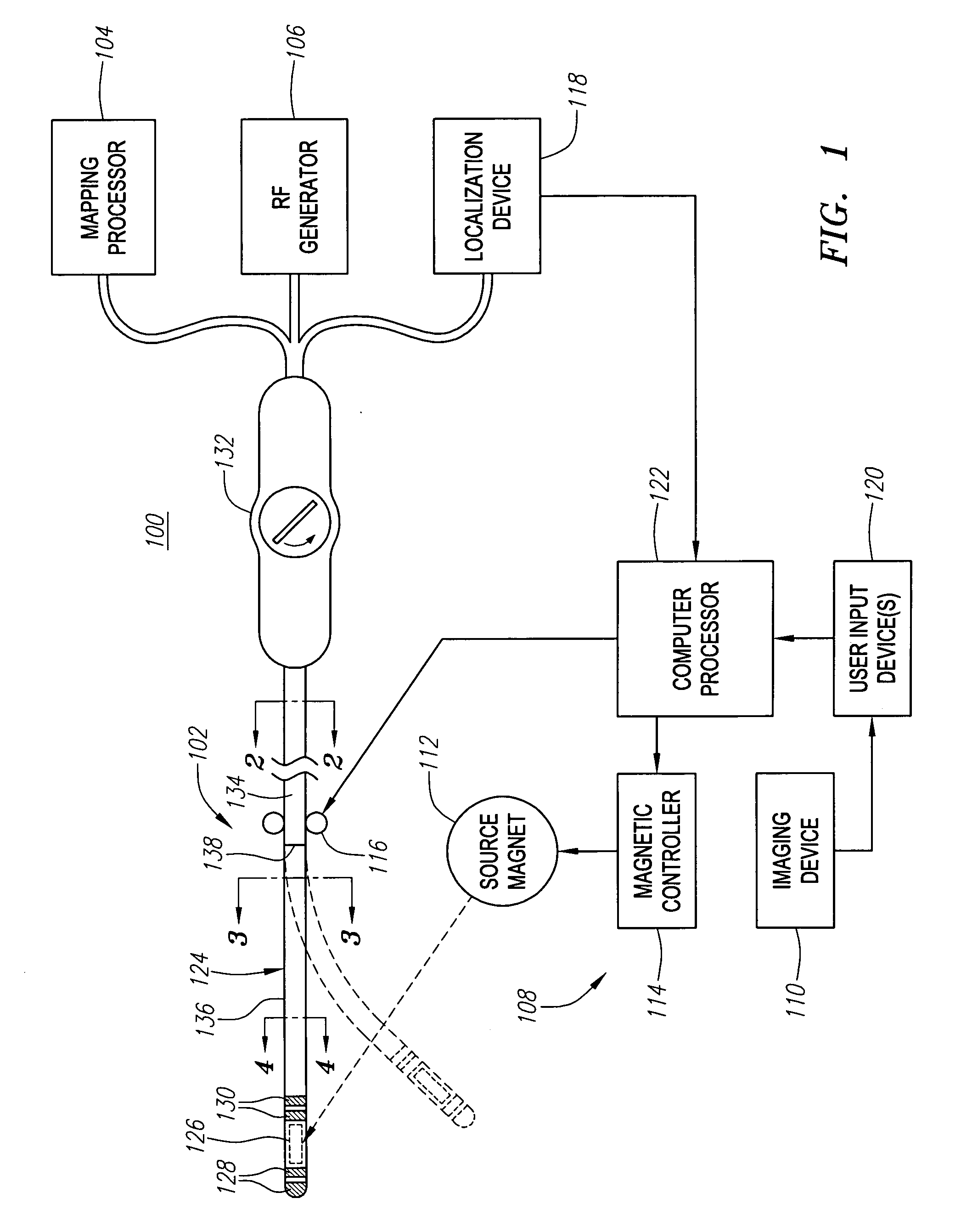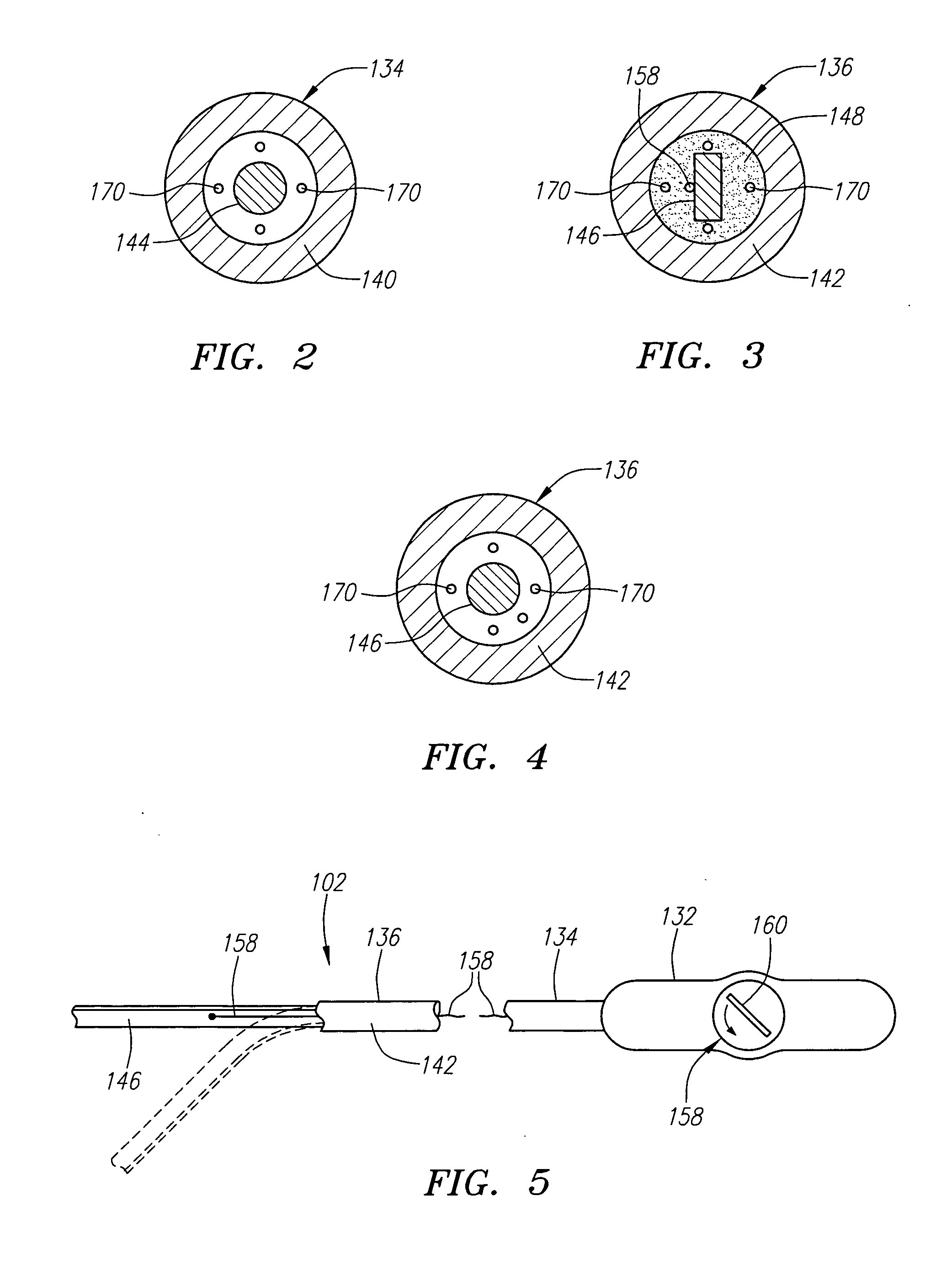Magnetic navigation systems with dynamic mechanically manipulatable catheters
a magnetic navigation system and dynamic technology, applied in the field of medical navigation systems and methods, can solve the problems of inability to strictly control the position of the catheter tip, the real world performance of such systems may be suboptimal, and the limitations of conventional magnetic navigation systems are magnified. achieve the effect of efficient and predictably navigation
- Summary
- Abstract
- Description
- Claims
- Application Information
AI Technical Summary
Benefits of technology
Problems solved by technology
Method used
Image
Examples
Embodiment Construction
[0024] Referring to FIG. 1, a magnetic / mechanical catheter navigation system 100 constructed in accordance with the present inventions is shown. The system 100 generally comprises (a) an ablation / mapping catheter 102 configured to be introduced through the vasculature of the patient, and into a three-dimensional anatomical cavity, and in particular, a chamber of the heart, where it can be used to ablate and map heart tissue; (b) an electrophysiology mapping processor 104 used to electrophysiologically map heart tissue with the catheter 102 in order to identify arrhythmia causing substrates; (c) a source of ablation energy, and in particular, a radio frequency (RF) generator 106, for delivering ablation energy to the catheter 102 in order to ablate the identified substrates; and (d) a magnetic navigation system 108 for magnetically guiding the catheter 102 through the patient's vasculature and within the patient's heart. The system 100 may optionally comprise an introducer (not shown...
PUM
 Login to View More
Login to View More Abstract
Description
Claims
Application Information
 Login to View More
Login to View More - R&D
- Intellectual Property
- Life Sciences
- Materials
- Tech Scout
- Unparalleled Data Quality
- Higher Quality Content
- 60% Fewer Hallucinations
Browse by: Latest US Patents, China's latest patents, Technical Efficacy Thesaurus, Application Domain, Technology Topic, Popular Technical Reports.
© 2025 PatSnap. All rights reserved.Legal|Privacy policy|Modern Slavery Act Transparency Statement|Sitemap|About US| Contact US: help@patsnap.com



